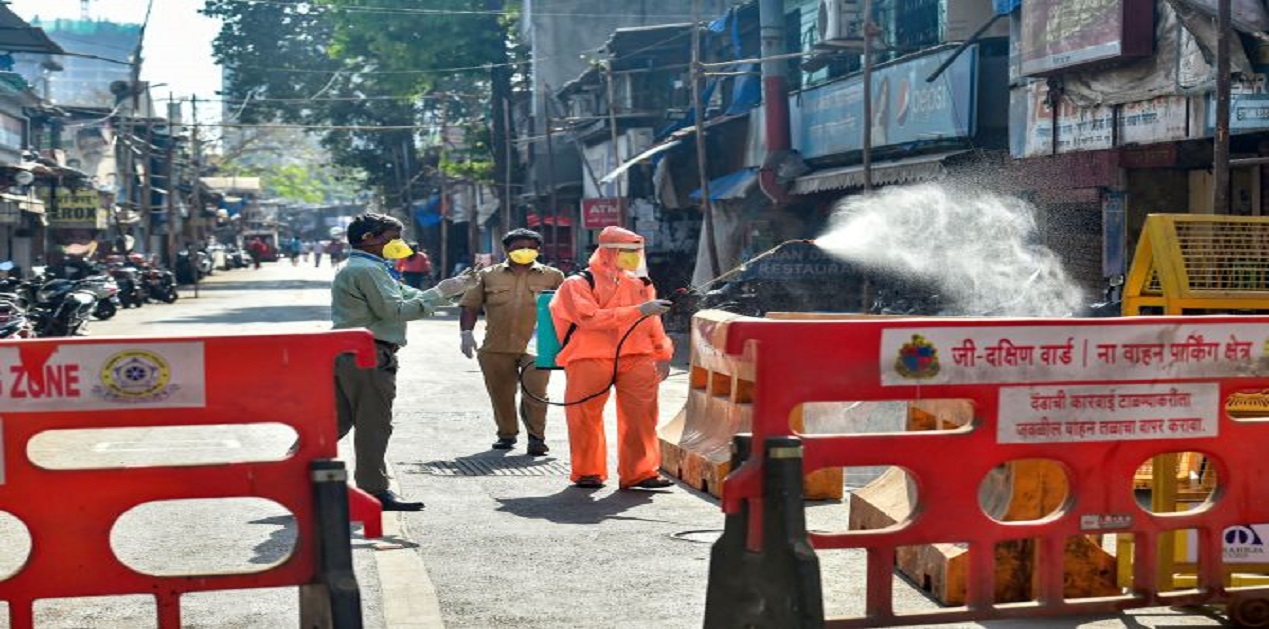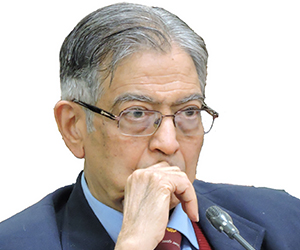All Indians await with bated breath the government's decision as to what should be done on expiry of the current countrywide lockdown. There are no easy answers and this is an occasion when no one would envy being in Prime Minister Modi's shoes. India is, however, fortunate in having him at the helm of affairs as he is not one to dither and to shy away from taking hard decisions.
In fashioning the national response to the situation one must take into account the following hard realities:
- The choice between a lockdown and opening up is projected as a choice between saving lives and saving the economy. The reality is, however, not so simple. Saving the economy is equally necessary to save lives particularly as millions in India live from hand to mouth. The lockdown related disruptions have brought the economy to a standstill and caused life threatening starvation and hardship. Treatment of those with other serious ailments is being put on hold and there are reports that to conserve beds for coronavirus cases the same are being denied to patients afflicted with other serious illnesses. Supply disruptions are assuming serious proportions with around 3.5 lakh trucks stuck on our roads with Rs 35,000 crores worth of supplies ranging from cars to white goods to essentials. Clearly, a lockdown jeopardises India's dreams of even a modicum of economic growth, leave aside the rapid economic growth, so critical for its well being and all the more necessary at a time when it has been in an economic slump for months on end marked by massive unemployment. The Centre for Monitoring Indian Economy (CMIE) is quoted to have pegged the unemployment rate in March at a worrying 8.7% which with the lockdown at the end of the month it now projects at 23.8%
- The success of the lockdown is open to question as there has been a twelve-fold increase in coronavirus cases in the country from around 600 on 25 March to over 7360 on 12 April morning. While without the lockdown the number of cases would naturally have been much higher the fact is that its success has been less than impressive. This is essentially due to three factors. First, social distancing on which it is predicated is foreign to Indians. Second, it is impractical in our country as many of us live huddled together in overcrowded and unhygienic conditions. Finally, the performance of the bureaucracy responsible for the effective implementation of the lockdown has been less than satisfactory. This is borne out by its failure in preventing the massive and uncoordinated movement of migrant workers and the shenanigans of the Tablighi Jamaat. These two episodes were preventable and have made a mockery of the lockdown. Indeed, one is surprised that the government has not banned the Tablighi Jamaat and slapped criminal charges on its leadership. This is a sine qua non for the government's directives to be taken seriously in future.
- The fears generated by the coronavirus induced flu are somewhat overblown and the disease must be seen in its proper perspective. Its mortality rate of 3.8% is relatively low as compared to many other virus induced diseases. Indeed the mortality rate of the 1918 flu pandemic which took 20 million lives in India was 10-15%. Moreover, the bulk of those afflicted are either asymptomatic or recover with no, or minimal, treatment as in the case of the common flu. Thus, while one must take all appropriate steps to mitigate its impact these should not end up delivering a body blow to our economy. This is all the more so as the virus is not going to be with us merely for a month or two. It is likely to be endemic in the country indefinitely and will continue to plague us till the population develops an immunity to it or till we can curb it through a vaccine. This contention is supported by a study made public on 9 April in the Indian Journal of Medical Research suggesting that community transmission of the disease had become apparent in India from 22 March -three days before the imposition of the countrywide lockdown.
There are essentially three choices before the leadership in fashioning a policy post the current lockdown, notably, an extension of the lockdown, its complete lifting, or a graded response.
An extension of the lockdown, which has apparently been advocated by many states, would inflict further damage on an already ailing economy, cause untold suffering particularly to the poorest strata of society, and would not be panacea for the coronavirus crisis as the virus has secured a firm foothold in India and will continue to afflict us for many months. Accordingly, a lockdown extension does not constitute a sustainable solution.
The complete lifting of the lockdown would also not be advisable as it would result in the unchecked spiralling of coronavirus cases on a countrywide basis which would rapidly overwhelm our fragile health infrastructure.
A carefully graded lifting of the lockdown would be the only appropriate response. It should be based on practical measures designed to save lives as also the economy, as the two are inextricably intertwined. Given the pain being felt by all sectors of the economy it should also be accompanied by a comprehensive package geared to providing them relief and support. The practice of coming up with relief measures in a piecemeal fashion should be substituted by an all embracing approach covering the entire economy.
Since about 300 districts are showing no signs of the coronavirus all local restrictions should be lifted therefrom accompanied by all necessary measures required to ensure that the virus does not spread to them from the affected areas. Special attention should be given to provide all necessary support to incentivising and accelerating economic activity in these districts.
Government has already included agricultural activities among the essential services to be permitted in the current troubled times. It needs to be ensured that special attention is provided to this sector throughout the country particularly in the next few weeks as this is the harvest season. Any disruption of harvesting would be disastrous.
As to the parts of the country affected by the virus the government may consider announcing a lifting of the lockdown with the following caveats in place for a further one month:
- Ban on the movement of passenger trains, aircraft, buses, and ships;
- Ban on all gatherings of more than five including at religious shrines and places of worship;
- Ban on the functioning of malls, cinemas, museums, theatres, and clubs; restaurants may be allowed to operate only in take away mode;
- Ban on the opening of schools and colleges except for the purpose of conducting examinations;
- Mandatory use of masks in public places;
- All institutions, including also repair and maintenance facilities, must ensure that best practices are observed to prevent coronavirus infection through periodic sanitisation of the premises as well as the use of masks, social distancing and hand sanitisers. Additionally, all personnel should overtime be tested for the coronavirus in a staggered manner
- Manufacturing establishments must ensure observance of the practises specified at 6 above and also be required to operate at a maximum of 50% of capacity. If possible they should be encouraged to house their staff on site and if they cannot do so should arrange their movement from home to site and back in earmarked buses.
- Labour in the informal sector may regularly be advised and incentivised to follow the best practices to prevent the coronavirus flu. Additionally, they may be tested in a staggered fashion for the flu at their place of stay.
There are no easy solutions or perfect choices before us. A surge in corona virus -positive cases is likely after the partial lifting of the lockdown. The solution lies not in keeping the population under indefinite lockdown but in rapidly improving our health care system, addressing the shortages of personal protective gear, masks, ventilators, testing kits, medicines etc and in producing a vaccine. Some steps have been initiated in this direction and they will begin to bear fruit soon. In the interim, we cannot afford to suspend economic activity much longer. We will have to make hard choices. A graded lifting of the lockdown seems the best way forward.
(The paper is the author’s individual scholastic articulation. The author certifies that the article/paper is original in content, unpublished and it has not been submitted for publication/web upload elsewhere, and that the facts and figures quoted are duly referenced, as needed, and are believed to be correct). (The paper does not necessarily represent the organisational stance... More >>
Image Source: https://im.rediff.com/news/2020/apr/4coronavirus2.jpg











Post new comment